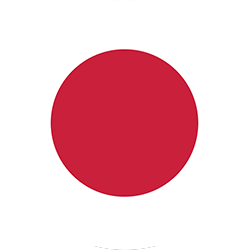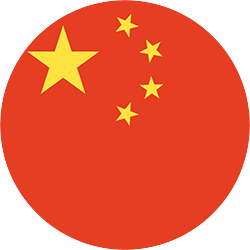Global Pharmacovigilance Translation
Stepes (/’steps/) provides comprehensive pharmacovigilance (PV) translation services for all areas of drug safety and compliance, covering both clinical and marketed products. Our industry expertise, paired with technology-driven localization solutions, ensures accurate and scalable PV translations in over 100 languages.
Accurate PV Translations You Can Trust
Do you need professional pharmacovigilance translation services to ensure international drug safety and global regulatory compliance? Look no further than Stepes. We offer expert translations for all areas of the drug safety landscape, from ICSR and PV signal translation to REMS and medical affairs localization. Our dedicated team of life sciences translators and multilingual drug safety subject matter experts utilize Stepes’ advanced language automation technologies, ensuring precision and efficiency. Global clinical research organizations (CROs) and pharmaceutical sponsors rely on us for exceptional PV translations in European, Asian, and Latin American languages.
Precision in pharmacovigilance translation is non-negotiable; inaccuracies not only jeopardize patient safety but also pose significant legal risks for pharmaceutical entities. Beyond the expertise of our linguistic specialists, who are well-versed in the intricacies of the pharmacovigilance sector, Stepes incorporates cutting-edge AI and machine learning into the PV translation workflow. These tools streamline the review of source documents, pinpoint ambiguities, discrepancies, and potential errors, enable context-driven terminology extraction, and automate rigorous quality assurance protocols. Our unique combination of human expertise and technological innovation allows Stepes to consistently deliver high-quality, large-scale translations tailored to the pharmacovigilance industry.
Individual Case Safety Reports (ICSRs) Translation
Stepes’ pharmacovigilance translation services include accurate ICSR localization. ICSRs are detailed reports of individual patient cases that outline adverse reactions or events. When these reports come from non-English speaking regions, or need to be submitted to regulatory authorities in other languages, their accurate translation becomes essential. Our ICSR translation process involves a two-stage verification: initial translations are conducted by life sciences experts, followed by a review from a second linguist with pharmacovigilance expertise. It’s imperative that the translated content is formatted and structured correctly to ensure seamless integration and submission to regulatory platforms, maintaining data integrity and compliance.
Risk Management Plans (RMPs) Translation
Stepes provides PV translations for RMP documents, outlining the risk management system a company aims to implement for specific medicinal products prior to submission to local health authorities. We handle all RMP materials, including Safety Specifications, Pharmacovigilance Plan, Risk Minimization Measures, and Plans for Post-Authorization Safety Studies (PASS). Given the critical nature of these documents, accurate translation is essential to ensure that all risks and plans are clearly communicated and understood by local health authorities and the public across diverse regions.
REMS Documentation Translation
Do you need to translate Risk Evaluation and Mitigation Strategies (REMS) documentation into Spanish, Chinese, or other languages? Stepes has extensive expertise in REMS translations, assisting our clients in navigating the challenges posed by linguistic barriers when managing drug-related risks. We recognize the crucial role of REMS in conveying essential safety information and ensuring adherence to required measures aimed at mitigating drug-associated risks. Our professional translators, proficient in the specialized language of pharmacovigilance, are skilled at capturing the intricate nuances of REMS content.
Examples of Pharmacovigilance Content We Translate
Stepes provides professional PV translation services to meet our clients’ pharmacovigilance documentation and reporting requirements across various languages and cultures. Our linguistic experts have a deep understanding of both the language and the pharmacovigilance domain, ensuring accuracy and consistency in the following areas:
Individual Case Safety Reports (ICSRs)
 Individual Case Safety Report (ICSR)
Individual Case Safety Report (ICSR)
Report ID: 20230711-ICSR-001
Reporter: Dr. Jane Smith, Healthcare Professional
Patient Information:
- Age: 45
- Gender: Male
- Weight: 85 kg
- Medical History: Hypertension, no known allergies
- Product Name: Xyzabeta
- Manufacturer: GlobalPharm Inc.
- Batch Number: XP202307
- Dosage: 50 mg
- Frequency: Once daily
- Route of Administration: Oral
- Therapy Duration: 3 weeks
Adverse Event Description: On July 5th, 2024, the patient experienced severe dizziness and nausea approximately 30 minutes after administration of the drug. The symptoms lasted for about two hours and resolved without medical intervention. The patient did not seek emergency care and reported the incident during a follow-up appointment.
Outcome of the Adverse Event: The adverse event was classified as non-serious and resolved without sequelae. The patient discontinued the use of Xyzabeta as a precautionary measure.
Assessment of Causality: The temporal association and known pharmacological profile of Xyzabeta suggest a possible causal relationship between the drug and the reported adverse event. Further investigation is recommended to ascertain the relationship.
Reporter’s Comments: Recommend monitoring for similar reports involving this batch of Xyzabeta. Additional patient follow-up may be necessary to ensure safety and efficacy of the drug.
Follow-up Information: No additional information is available at this time. The patient has been advised to report any further adverse events immediately.
 Informe de Seguridad de Casos individuales (ICSR por sus siglas en inglés)
Informe de Seguridad de Casos individuales (ICSR por sus siglas en inglés)
ID del informe: 20230711-ICSR-001
Informante: Dra. Jane Smith, profesional de la salud
Información del paciente:
- Edad: 45 años
- Género: Masculino
- Peso: 85 kg
- Historia médica: Hipertensión. No se conocen alergias.
Información del medicamento:
- Nombre del producto: Xyzabeta
- Fabricante: GlobalPharm Inc.
- Número del lote: XP202307
- Dosis: 50 mg
- Frecuencia: Una vez al día
- Vía de administración: Oral
- Duración del tratamiento: 3 semanas
Descripción del episodio adverso: El 5 de julio de 2024, el paciente sufrió mareos intensos y náuseas aproximadamente 30 minutos después de la toma del medicamento. Los síntomas duraron alrededor de dos horas y desaparecieron sin necesidad de intervención médica. El paciente no solicitó atención de emergencia e informó sobre el incidente durante una consulta de seguimiento.
Resultado del episodio adverso: El episodio adverso fue clasificado como no grave y no dejó secuelas. El paciente interrumpió el uso de Xyzabeta como medida de precaución.
Evaluación de la causalidad: La asociación temporal y el perfil farmacológico conocido de Xyzabeta sugieren una posible relación causal entre el medicamento y el episodio adverso reportado. Se recomienda una investigación adicional para confirmar la relación.
Comentarios del informante: Se recomienda monitorear informes similares de este lote de Xyzabeta. Se recomienda realizar un seguimiento adicional del paciente para garantizar la seguridad y eficacia del medicamento.
Información de seguimiento: No hay información adicional disponible en este momento. Se le ha pedido al paciente que informe cualquier episodio adverso adicional de inmediato.
Risk Management Plans (RMPs)
 Risk Management Plan (RMP)
Risk Management Plan (RMP)
Product Name: Xyzabeta
Active Substance: Xyzabetazole
Manufacturer: GlobalPharm Inc.
Version Date: July 11, 2024
Plan Summary: The Risk Management Plan for Xyzabeta aims to ensure patient safety by identifying, evaluating, and mitigating the potential risks associated with its use. The document outlines the known and potential risks, proposes monitoring strategies, and details interventions to minimize adverse effects while maximizing therapeutic efficacy.
- Safety Concerns:
- Identified Risks: Hepatotoxicity, QT prolongation
- Potential Risks: Renal impairment
- Missing Information: Safety in pregnant women
- Pharmacovigilance Activities:
- Routine Pharmacovigilance: Includes regular monitoring of adverse event reports, literature reviews, and updates from global regulatory authorities.
- Additional Pharmacovigilance Activities: Post-marketing surveillance studies will be initiated to gather further data on renal impairment risks.
- Risk Minimization Measures:
- For Healthcare Professionals: Distribute educational materials detailing risk factors, early signs of hepatotoxicity, and guidelines for QT interval monitoring.
- For Patients: Provide medication guides that explain potential side effects, importance of regular liver function tests, and advice on when to seek medical attention.
- Implementation and Effectiveness Evaluation:
- Implementation Strategies: Collaborate with healthcare providers and patient advocacy groups to distribute educational materials.
- Effectiveness Evaluation: Conduct periodic assessments using feedback from healthcare professionals and patients to determine the adequacy of current risk minimization measures and identify areas for improvement.
- Plan Updates: The RMP will be reviewed annually or as new information becomes available that impacts the risk-benefit balance of Xyzabeta. All updates will be submitted to the regulatory authorities in accordance with local laws and regulations.
 Plan de Gestion des Risques (PGR)
Plan de Gestion des Risques (PGR)
Nom du Produit : Xyzabeta
Substance Active : Xyzabetazole
Fabricant : GlobalPharm Inc.
Date de Version : 11 juillet 2024
Résumé du Plan : Le Plan de Gestion des Risques pour Xyzabeta vise à assurer la sécurité des patients en identifiant, évaluant et atténuant les risques potentiels associés à son utilisation. Ce document décrit les risques connus et potentiels, propose des stratégies de surveillance et détaille les interventions pour minimiser les effets indésirables tout en maximisant l'efficacité thérapeutique.
- Préoccupations de Sécurité :
- Risques Identifiés : Hépatotoxicité, prolongation du QT
- Risques Potentiels : Insuffisance rénale
- Informations Manquantes : Sécurité chez les femmes enceintes
- Activités de Pharmacovigilance :
- Pharmacovigilance Routinière : Comprend le suivi régulier des rapports d'événements indésirables, les revues de littérature et les mises à jour des autorités réglementaires mondiales.
- Activités de Pharmacovigilance Supplémentaires : Des études de surveillance post-commercialisation seront initiées pour recueillir davantage de données sur les risques d'insuffisance rénale.
- Mesures de Minimisation des Risques :
- Pour les Professionnels de Santé : Distribuer des matériaux éducatifs détaillant les facteurs de risque, les premiers signes d'hépatotoxicité, et les directives pour le suivi de l'intervalle QT.
- Pour les Patients : Fournir des guides de médication qui expliquent les effets secondaires potentiels, l'importance des tests de fonction hépatique réguliers et les conseils sur quand consulter un médecin.
- Mise en Œuvre et Évaluation de l'Efficacité :
- Stratégies de Mise en Œuvre : Collaborer avec les prestataires de soins de santé et les groupes de défense des patients pour distribuer les matériaux éducatifs.
- Évaluation de l'Efficacité : Réaliser des évaluations périodiques en utilisant les retours des professionnels de santé et des patients pour déterminer l'adéquation des mesures actuelles de minimisation des risques et identifier les domaines à améliorer.
- Mises à Jour du Plan : Le PGR sera révisé annuellement ou dès que de nouvelles informations disponibles affectent l'équilibre bénéfice-risque de Xyzabeta. Toutes les mises à jour seront soumises aux autorités réglementaires conformément aux lois et règlements locaux.
Periodic Safety Update Reports (PSURs)
 Periodic Safety Update Report (PSUR)
Periodic Safety Update Report (PSUR)
Product Name: Xyzabeta
Active Substance: Xyzabetazole
Reporting Period: January 1, 2024 - June 30, 2024
Manufacturer: GlobalPharm Inc.
Report Date: July 10, 2024
Introduction: This Periodic Safety Update Report (PSUR) for Xyzabeta covers a six-month period, detailing the ongoing evaluation of the safety profile of the drug. The report compiles data from clinical trials, post-marketing surveillance, and spontaneous reports to provide a comprehensive analysis of the drug's risk-benefit balance.
- Executive Summary: The report synthesizes findings from various sources, highlighting key safety information, significant changes to the safety profile, and an assessment of benefit-risk balance. No new critical risks have been identified during this period.
- Exposure Data:
- Total Number of Patients Treated: Approximately 200,000
- Patient-Days of Exposure: Over 10 million days
- This section provides quantitative data on how extensively the drug has been used in the market.
- Safety Evaluation:
- Adverse Event Reports: 500 reports of mild to moderate adverse events, predominantly gastrointestinal disturbances and headaches.
- Serious Adverse Events: 15 reports, including 2 cases of unanticipated severe allergic reactions.
- Analysis of New Information: Ongoing studies and newly reported data are continually assessed to update the drug’s safety profile.
- Risk Management and Mitigation Strategies:
- Existing Measures: Continuous monitoring and regular training sessions for healthcare providers on adverse event reporting.
- Proposed Changes: Introduction of updated labeling to enhance patient awareness of potential allergic reactions.
- Conclusion and Recommendations: The benefit-risk balance of Xyzabeta remains favorable. However, monitoring for allergic reactions will be enhanced, and healthcare providers will be updated on the latest safety data. Future PSURs will further evaluate these measures and report on their effectiveness.
- Appendices: Detailed tables and graphs of adverse event data, references to studies mentioned, and documentation of regulatory interactions are included for comprehensive review.
 Periodischer Sicherheitsbericht (PSUR)
Periodischer Sicherheitsbericht (PSUR)
Produktname: Xyzabeta
Wirkstoff: Xyzabetazol
Berichtszeitraum: 1. Januar 2024 bis 30. Juni 2024
Hersteller: GlobalPharm Inc.
Berichtsdatum: 10. Juli 2024
Einleitung: Dieser periodische Sicherheitsbericht für Xyzabeta umfasst einen Zeitraum von sechs Monaten und beschreibt die fortlaufende Bewertung des Sicherheitsprofils des Arzneimittels. Der Bericht sammelt Daten aus klinischen Studien, der Überwachung nach der Markteinführung und spontanen Meldungen, um eine umfassende Analyse des Risiko-Nutzen-Verhältnisses des Medikaments zu bieten.
- Zusammenfassung: Der Bericht fasst die Ergebnisse aus verschiedenen Quellen zusammen und hebt wichtige Sicherheitsinformationen, wesentliche Änderungen im Sicherheitsprofil und eine Bewertung des Risiko-Nutzen-Verhältnisses hervor. In diesem Zeitraum wurden keine neuen kritischen Risiken identifiziert.
- Expositionsdaten:
- Gesamtzahl der behandelten Patienten: Ungefähr 200.000
- Patiententage der Exposition: Über 10 Millionen Tage
- Dieser Abschnitt liefert quantitative Daten darüber, wie umfangreich das Medikament auf dem Markt verwendet wurde.
- Sicherheitsbewertung:
- Berichte über unerwünschte Ereignisse: 500 Berichte über leichte bis mäßige unerwünschte Ereignisse, vorwiegend Magen-Darm-Störungen und Kopfschmerzen.
- Schwere unerwünschte Ereignisse: 15 Berichte, darunter 2 Fälle von unerwarteten schweren allergischen Reaktionen.
- Analyse neuer Informationen: Laufende Studien und neu gemeldete Daten werden kontinuierlich bewertet, um das Sicherheitsprofil des Medikaments zu aktualisieren.
- Risikomanagement und Minderungsstrategien:
- Bestehende Maßnahmen: Kontinuierliche Überwachung und regelmäßige Schulungen für Gesundheitsdienstleister über die Meldung von unerwünschten Ereignissen.
- Vorgeschlagene Änderungen: Einführung einer aktualisierten Kennzeichnung, um das Bewusstsein der Patienten für potenzielle allergische Reaktionen zu erhöhen.
- Schlussfolgerung und Empfehlungen: Das Risiko-Nutzen-Verhältnis von Xyzabeta bleibt günstig. Die Überwachung allergischer Reaktionen wird jedoch verstärkt, und Gesundheitsdienstleister werden über die neuesten Sicherheitsdaten informiert. Zukünftige PSURs werden diese Maßnahmen weiter bewerten und über deren Wirksamkeit berichten.
- Anhänge: Detaillierte Tabellen und Grafiken zu Daten über unerwünschte Ereignisse, Verweise auf erwähnte Studien und Dokumentation von regulatorischen Interaktionen sind für eine umfassende Überprüfung enthalten.
REMS (Risk Evaluation and Mitigation Strategies)
 Risk Evaluation and Mitigation Strategy (REMS)
Risk Evaluation and Mitigation Strategy (REMS)
Product Name: SesenClear
Active Substance: Sesenmol
Manufacturer: Sensen Pharma
REMS Version Date: June 15, 2024
Introduction: This REMS document outlines the comprehensive strategies implemented by Sensen Pharma to manage the known and potential risks associated with SesenClear while ensuring its effective use. The plan is designed to mitigate specific serious risks such as nephrotoxicity and severe cardiovascular reactions.
- REMS Components:
- Communication Plan: Targeted education and outreach programs for healthcare providers, emphasizing the safe use of SesenClear, recognition of its potential risks, and management strategies.
- Elements to Assure Safe Use (ETASU): Requirements include special training for healthcare providers, certification of treatment centers, and restricted distribution systems to ensure that SesenClear is prescribed and dispensed only by qualified personnel.
- Implementation System: Monitoring the effectiveness of the REMS components through audits and assessing compliance by healthcare facilities and professionals.
- Goals of the REMS: The primary goals are:
- To educate healthcare providers on the serious risks associated with SesenClear and the importance of adherence to the prescribed treatment protocol.
- To prevent the occurrence of nephrotoxicity and severe cardiovascular reactions through proactive patient screening and monitoring.
- Educational Program:
- For Healthcare Providers: Regularly updated training modules on drug administration, risk factors, early symptom recognition, and immediate response strategies.
- For Patients: Informative brochures and patient medication guides that clearly describe potential side effects, warning signs, and steps to take in the event of a suspected adverse reaction.
- Monitoring and Reporting:
- Periodic Review: Continuous evaluation of the program's effectiveness based on feedback from healthcare providers and patients, adverse event reporting, and periodic safety updates.
- Reporting Mechanisms: Clear protocols for reporting adverse reactions immediately to both Sensen Pharma and regulatory authorities.
- Plan Modifications: The REMS will be regularly reviewed and updated as necessary based on new safety information, regulatory changes, or feedback from healthcare practitioners and patients.
- Contact Information: For further information or to report a safety concern, healthcare providers and patients can contact Sensen Pharma at REMS@sesenpharma.com.
 リスク評価および軽減戦略(REMS)
リスク評価および軽減戦略(REMS)
製品名:セセンクリア
有効成分:セセンモル
製造元:セセンファーマ
REMSバージョン日付:2024年6月15日
導入: このREMS文書は、セセンクリアに関連する既知および潜在的なリスクを管理し、その効果的な使用を保証するために、セセンファーマが実施している包括的な戦略を概説しています。この計画は、腎毒性および重篤な心血管反応などの特定の重大なリスクを軽減するよう設計されています。
- REMSの構成要素:
- **コミュニケーションプラン:**セセンクリアの安全な使用、潜在的なリスクの認識、および管理戦略を強調する医療提供者向けの教育およびアウトリーチプログラム。
- **安全使用を保証する要素(ETASU):**セセンクリアが資格を持つ人員によってのみ処方および分配されることを保証するために、医療提供者の特別なトレーニング、治療センターの認証、および制限された流通システムが要求されます。
- **実施システム:**監査を通じてREMS構成要素の効果を監視し、医療施設および専門家のコンプライアンスを評価します。
- REMSの目標: 主な目標は以下の通りです:
- セセンクリアに関連する重大なリスクおよび処方された治療プロトコルへの遵守の重要性について医療提供者に教育する。
- 積極的な患者スクリーニングおよびモニタリングを通じて、腎毒性および重篤な心血管反応の発生を防ぐ。
- 教育プログラム:
- **医療提供者向け:**薬剤の投与、リスク要因、初期症状の認識、および即時の対応戦略について定期的に更新されるトレーニングモジュール。
- **患者向け:**潜在的な副作用、警告サイン、および疑わしい副作用が発生した場合の対処手順を明確に説明する情報ブローシャーおよび患者向け薬剤ガイド。
- モニタリングおよび報告:
- **定期的なレビュー:**医療提供者および患者からのフィードバック、副作用報告、および定期的な安全性更新に基づいてプログラムの効果を継続的に評価します。
- **報告メカニズム:**副作用を直ちにセセンファーマおよび規制当局に報告するための明確なプロトコル。
- 計画の変更: 新たな安全情報、規制の変更、または医療従事者および患者からのフィードバックに基づいて、必要に応じてREMSを定期的に見直し、更新します。
- 連絡先情報: 詳細情報の入手または安全性に関する懸念事項を報告するために、医療提供者および患者は REMS@sesenpharma.comまでセセンファーマに連絡することができます。
PV Signal Documentation
 Pharmacovigilance Signal Documentation
Pharmacovigilance Signal Documentation
Product Name: Zetaclear
Active Substance: Zetamol
Signal Identification Date: July 10, 2024
Document Prepared By: Dr. Jane Doe, Pharmacovigilance Department
Introduction: This document outlines the identification, evaluation, and recommended actions for a potential safety signal associated with Zetaclear. A safety signal refers to a concern about an excess of adverse events compared to what would be expected to be associated with a product's use.
- Signal Description: The potential safety signal was identified following an increase in reports of severe renal impairment among patients using Zetaclear. This documentation gathers data from multiple sources including spontaneous reporting systems, clinical trials, and literature reviews.
- Data Collection:
- Spontaneous Reports: 150 reports of renal impairment have been received as of June 30, 2024.
- Clinical Trial Data: Analysis of phase III clinical trial data indicated a slightly elevated risk of renal impairment in the treatment group compared to the control group.
- Literature Review: Recent publications suggest a plausible association between Zetamol and renal stress under certain conditions.
- Signal Assessment:
- Quantitative Analysis: Statistical methods were applied to compare the incidence rate of renal impairment in exposed populations versus the general population.
- Expert Review: A panel of nephrologists reviewed the findings and supported the potential association as a valid signal.
- Risk Factor Identification: Patients with pre-existing renal conditions or those using concomitant nephrotoxic drugs were found to be at increased risk.
- Risk Management and Mitigation Recommendations:
- Labeling Changes: Update the product label to include a warning about potential renal impairment.
- Healthcare Provider Communication: Distribute safety alerts to healthcare providers, highlighting the need for renal function monitoring in at-risk patients.
- Patient Education: Enhance patient information leaflets to include information on recognizing symptoms of renal impairment and the importance of regular medical check-ups.
- Follow-up Actions:
- Further Data Collection: Continue to monitor adverse event reports and conduct a targeted post-marketing surveillance study.
- Review Schedule: The next review of this safety signal is scheduled for December 31, 2024.
- Conclusion: Ongoing monitoring and proactive management are essential to address this identified safety signal. The pharmacovigilance team will continue to update all stakeholders as more data becomes available and further assessments are made.
 药物警戒信号文档
药物警戒信号文档
产品名称:洁泰清
活性成分:洁泰莫尔
信号识别日期:2024年7月10日
文档准备人:药物警戒部门,简·杜博士
引言: 本文档概述了与洁泰清相关的潜在安全信号的识别、评估和推荐行动。安全信号指的是与产品使用相关的不良事件超出预期的问题。
- 信号描述: 在接到洁泰清使用患者出现严重肾脏损伤的报告增多后,识别出潜在的安全信号。本文档汇集了包括自发报告系统、临床试验和文献回顾在内的多个来源的数据。
- 数据收集:
- 自发报告:截至2024年6月30日,已收到150份肾损伤报告。
- 临床试验数据:第三阶段临床试验数据分析显示,与对照组相比,治疗组的肾损伤风险略有上升。
- 文献回顾:最近的出版物表明,在某些条件下,洁泰莫尔与肾脏压力之间存在合理的关联。
- 信号评估:
- 定量分析:应用统计方法比较暴露人群与一般人群中肾损伤的发生率。
- 专家审查:一组肾脏病专家审查了结果,并支持将该潜在关联视为有效信号。
- 风险因素识别:发现有既往肾病或同时使用肾毒性药物的患者风险增加。
- 风险管理和缓解建议:
- 标签更改:更新产品标签,包括关于潜在肾损伤的警告。
- 医疗提供者沟通:向医疗提供者分发安全警报,强调在有风险的患者中进行肾功能监测的需要。
- 患者教育:增强患者信息册,包括识别肾损伤症状的信息和定期进行医疗检查的重要性。
- 后续行动:
- 进一步数据收集:继续监控不良事件报告并进行针对性的市场后监测研究。
- 审查计划:下一次对此安全信号的审查计划于2024年12月31日进行。
- 结论: 持续监控和积极管理是解决已识别安全信号的关键。药物警戒团队将继续在更多数据可用且进一步评估完成时更新所有利益相关者的信息。
Medical Affairs Localization
Patient Information Leaflets (PIL) and Labels
Informed Consent Forms
Pharmacovigilance Training Materials
Communication with Regulatory Authorities
Pharmacovigilance System Master Files (PSMF)
Pharmacovigilance System Master File (PSMF)
Version 1.2
Date: September 1, 2024
Prepared by: John Doe, Pharmacovigilance Department, Zenith Pharma Inc.
Note: This document includes fictitious content for illustrative purposes only. The procedures and data described herein are hypothetical and should be used solely as an example for content reference in similar documents.
Introduction
- Objective: To ensure Zenith Pharma Inc. maintains and operates a pharmacovigilance system that is compliant with the regulations of the European Medicines Agency (EMA), the U.S. Food and Drug Administration (FDA), and other international health authorities.
- Scope: This PSMF applies to all pharmacovigilance activities related to marketed and investigational products of Zenith Pharma Inc. globally.
Pharmacovigilance System Description
- System Overview: Zenith Pharma’s pharmacovigilance system is centralized under the Pharmacovigilance Department, ensuring direct reporting to the Chief Medical Officer. The system is fully integrated with global regulatory requirements and is designed to facilitate real-time data exchange across all regional offices.
- Purpose: To detect, assess, understand, and prevent adverse effects or any other drug-related problem, thereby supporting risk management decisions and regulatory compliance.
Organizational Structure
- Organizational Chart: The chart highlights the hierarchical structure from the Global Head of Pharmacovigilance down to regional PV officers and data analysts.
- Roles and Responsibilities:
- Global Head of Pharmacovigilance: Oversees global PV strategy and compliance.
- PV Officers: Manage local PV activities and report significant safety information to the global head.
- Data Managers: Responsible for data integrity, database management, and analysis.
Sources of Safety Data
- Data Collection: Includes spontaneous reports, literature, studies, and partner reports. Zenith Pharma employs both active and passive surveillance systems to gather comprehensive safety data.
- Data Processing: Utilizes a proprietary PV database system that integrates data from over 100 countries, ensuring timely submission of adverse event reports to regulatory authorities.
Risk Evaluation and Management
- Risk Management Plan (RMP): Each product has a detailed RMP that outlines identified risks, potential risks, and missing information, accompanied by risk minimization activities tailored to specific markets.
- Signal Detection: Employ advanced statistical tools and algorithms to identify signals from the compiled data, facilitating prompt risk assessment and mitigation actions.
Standard Operating Procedures (SOPs)
- SOP for Adverse Event Reporting: Defines the criteria for reportable events, reporting timelines, and documentation procedures to ensure compliance with global regulatory requirements.
- SOP for Periodic Safety Update Reports (PSURs): Establishes timelines and content requirements for PSURs, detailing the process for data collection, analysis, and reporting.
Pharmacovigilance Training
- Training Programs: Mandatory annual training on the latest regulatory guidelines, internal SOPs, and system tools. Special sessions are conducted following major regulatory updates.
- Documentation of Training: Maintains records of all training sessions, including participant lists, agendas, and trainer credentials, auditable by regulatory authorities.
Audits and Inspections
- Internal Audit Reports: Annual internal audit summary reporting compliance rates, discrepancies found, and corrective measures taken.
- Regulatory Inspection Readiness: Describes the preparedness measures for upcoming inspections, including staff briefings and mock audits.
- Compliance Activities: Outlines ongoing efforts to enhance system compliance, including quarterly reviews of SOPs and system updates.
Annexes
- Supporting Documents: Includes validated tools and templates used in PV activities.
- Contact Information: Detailed contact list of all key personnel within the pharmacovigilance network, accessible to all staff for urgent communications.
Revision History
- Change Log: Documents the updates from the previous version, focusing on enhancements made to risk management strategies and updates in regulatory compliance requirements.
Request Translation Samples
Review the quality of our pharmacovigilance translations for Pharmacovigilance System Master Files (PSMF). Please complete the form on this page here to receive samples in any of the following languages:
- Spanish
- French
- German
- Chinese, Simplified (Mandarin)
- Japanese
- Russian
- Portuguese
- Italian
- Korean
- Arabic
- Hindi
Safety Announcements and Withdrawal Notices
Safety Announcement
Product Name: Ameliorate (Amelioxib)
Product Description: Oral medication for the treatment of chronic inflammatory conditions
Batch Numbers: A202405 to A202410
Date of Issue: September 1, 2024
Background
Zenith Pharma Inc. has identified a potential safety issue concerning Ameliorate (Amelioxib), which has been linked to an increased risk of severe cardiac events in patients with existing cardiovascular conditions.
Findings
Recent clinical trials and post-marketing surveillance data have shown a statistically significant increase in the incidence of myocardial infarction and stroke among high-risk patient groups taking Ameliorate, particularly in those with prior heart conditions.
Action Taken
As a precautionary measure and commitment to patient safety, Zenith Pharma Inc. is issuing an immediate withdrawal of all affected batches from the market. Additionally, healthcare professionals are advised to cease prescribing this medication to patients with known cardiovascular risks.
Withdrawal Notice
Immediate Withdrawal: Effective as of the date of this notice, all sales, distribution, and prescription of Ameliorate (Amelioxib) for the specified batches are to be halted. Healthcare providers are required to review patient records to identify those who may be affected and advise them of alternative treatments.
Steps for Healthcare Providers:
- Identify Affected Patients: Review records for prescriptions of Ameliorate from batch numbers A202405 to A202410.
- Patient Notification: Inform patients of the withdrawal and discuss alternative medication options.
- Return of Product: Arrange for the return of all unused Ameliorate stock from the affected batches to Zenith Pharma Inc. for proper disposal.
- Report Adverse Events: Continue to report any adverse events related to Ameliorate through established reporting channels.
Support for Healthcare Providers
Zenith Pharma Inc. will provide support and additional information to healthcare providers through our dedicated hotline and email. Detailed information, including alternative treatment options and patient management recommendations, is available upon request.
Contact Information
Hotline: 1-800-xxx-xxxx
Email: pv@zenithpharma.com
Revision History
Document Tracking: This is the first issuance of this safety announcement and withdrawal notice.
Request Translation Samples
Discover the quality of our pharmacovigilance translations for Safety Announcements and Withdrawal Notices. Please complete the form on this page to receive samples in any of the following languages:
- Spanish
- French
- German
- Chinese, Simplified (Mandarin)
- Japanese
- Russian
- Portuguese
- Italian
- Korean
- Arabic
- Hindi
Pharmacovigilance Training Localization
Pharmacovigilance training courses are an essential tool to educate healthcare professionals, internal teams, and patients about drug safety. These courses delve into aspects like complaints handling, adverse effects/adverse events reporting, and other pharmacovigilance regulations. Stepes provides professional PV training course translation and localization services, translating both text content and video assets with voice-over and subtitles. Our localization process ensures that all materials, whether static text or multimedia, are technically and linguistically tailored for each target audience. To learn more about Stepes’ comprehensive elearning translation solutions, please click here.
PV Signal Translation
Stepes possesses specialized linguistic expertise and adheres to industry-standard localization practices for translating pharmacovigilance signal documentation. These documents contain crucial data elements such as adverse event descriptions, causal relationships, severity gradings, and outcomes, each of which pertains to newly identified or altered adverse effects associated with medicinal products. The robust detection, comprehensive assessment, and clear understanding of these signals often necessitate translation to facilitate seamless communication among global teams and to ensure accurate representation to international regulatory bodies. Leveraging our deep domain knowledge and technology-driven quality assurance protocols, Stepes delivers best-in-class PV signal translations for this critical area of pharmacovigilance.
Need Professional Pharmacovigilance Translation Support?
